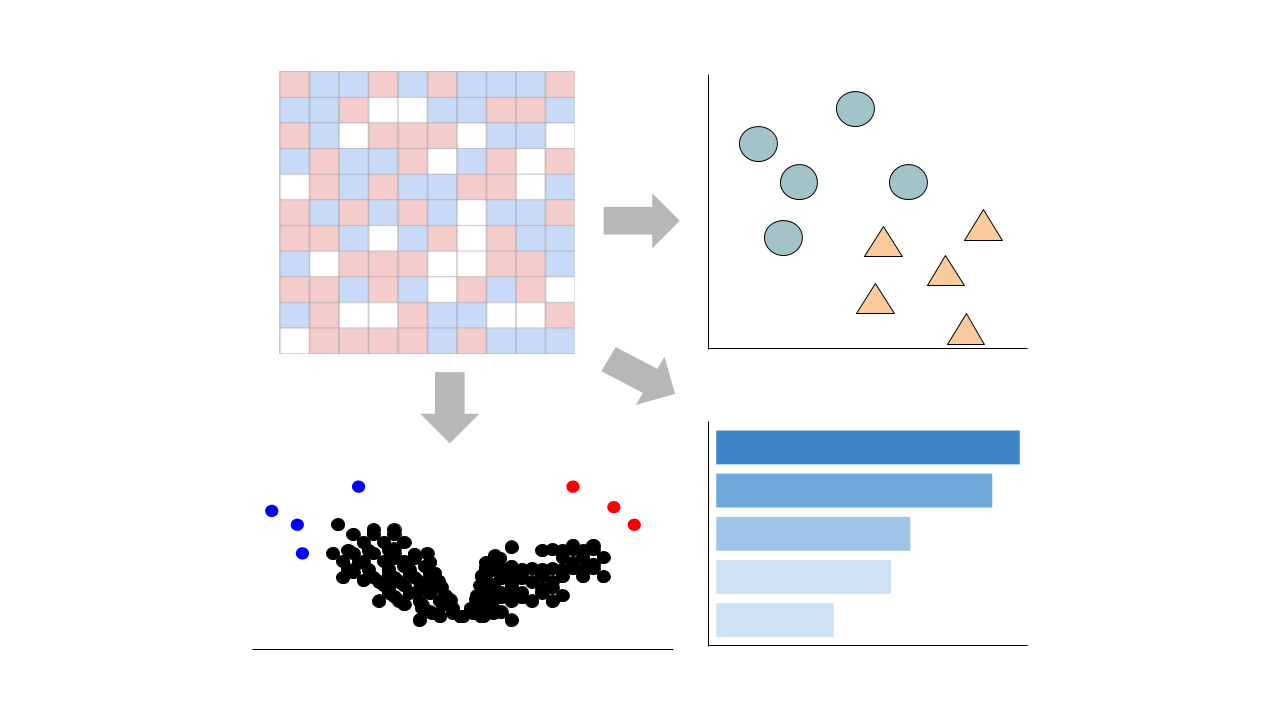 Gene counts are sourced from ARCHS4, which provides uniform alignment of GEO samples.
You can learn more about ARCHS4 and its pipeline here.
Gene counts are sourced from ARCHS4, which provides uniform alignment of GEO samples.
You can learn more about ARCHS4 and its pipeline here.
Select conditions below to toggle them from the plot:
| GROUP | CONDITION | SAMPLES |
|---|---|---|
| Pancreatic islets |
GSM3978567 GSM3978569 GSM3978571 GSM3978573 GSM3978575
|
|
|
GSM3978566 GSM3978568 GSM3978570 GSM3978572 GSM3978574
|
Submission Date: Jul 25, 2019
Summary: Adaptation of the islet β-cell insulin secretory response to changing insulin demand is critical for blood glucose homeostasis, yet the mechanisms underlying this adaptation are unknown. Here, we show that nutrient cues adapt insulin secretion by modulating chromatin state and transcription of genes regulating β-cell nutrient sensing and metabolism. Feeding stimulates histone acetylation at sites occupied by the chromatin-modifying enzyme Lsd1 in islets. We demonstrate that β-cell-specific deletion of Lsd1 leads to insulin hypersecretion, aberrant expression of nutrient response genes, and histone hyperacetylation, features we also observed in the db/db model of chronically increased insulin demand. Moreover, genetic variants associated with fasting glucose levels and type 2 diabetes risk are enriched at LSD1-bound sites in human islets, suggesting interindividual variation in β-cell functional adaptation in humans. These findings reveal nutrient state-dependent modulation of the islet epigenome and identify Lsd1 as a regulator of feeding-stimulated chromatin modification and adaptive insulin secretion.
GEO Accession ID: GSE134901
PMID: 36821378
Submission Date: Jul 25, 2019
Summary: Adaptation of the islet β-cell insulin secretory response to changing insulin demand is critical for blood glucose homeostasis, yet the mechanisms underlying this adaptation are unknown. Here, we show that nutrient cues adapt insulin secretion by modulating chromatin state and transcription of genes regulating β-cell nutrient sensing and metabolism. Feeding stimulates histone acetylation at sites occupied by the chromatin-modifying enzyme Lsd1 in islets. We demonstrate that β-cell-specific deletion of Lsd1 leads to insulin hypersecretion, aberrant expression of nutrient response genes, and histone hyperacetylation, features we also observed in the db/db model of chronically increased insulin demand. Moreover, genetic variants associated with fasting glucose levels and type 2 diabetes risk are enriched at LSD1-bound sites in human islets, suggesting interindividual variation in β-cell functional adaptation in humans. These findings reveal nutrient state-dependent modulation of the islet epigenome and identify Lsd1 as a regulator of feeding-stimulated chromatin modification and adaptive insulin secretion.
GEO Accession ID: GSE134901
PMID: 36821378
Visualize Samples
 Visualizations are precomputed using the Python package scanpy on the top 5000 most variable genes.
Visualizations are precomputed using the Python package scanpy on the top 5000 most variable genes.
Precomputed Differential Gene Expression
 Differential expression signatures are automatically computed using the limma R package.
More options for differential expression are available to compute below.
Differential expression signatures are automatically computed using the limma R package.
More options for differential expression are available to compute below.
Signatures:
Select conditions:
Control Condition
Perturbation Condition
Only conditions with at least 1 replicate are available to select
 Differential expression signatures can be computed using DESeq2 or characteristic direction.
Differential expression signatures can be computed using DESeq2 or characteristic direction.
This pipeline enables you to analyze and visualize your bulk RNA sequencing datasets with an array of downstream analysis and visualization tools. The pipeline includes: PCA analysis, Clustergrammer interactive heatmap, library size analysis, differential gene expression analysis, enrichment analysis, and L1000 small molecule search.

 Chatbot
Chatbot Single Gene Queries
Single Gene Queries
 Gene Set Queries
Gene Set Queries
 Bulk Studies
Bulk Studies
 Single Cell Studies
Single Cell Studies
 Hypotheses
Hypotheses
 Resources
Resources
 Contribute
Contribute
 Downloads
Downloads About
About
 Help
Help